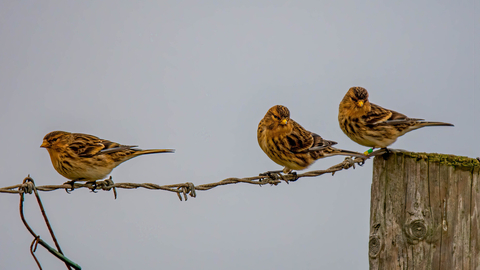
Twite © Pete Richman
Twite
Scientific name: Linaria flavirostris
This small finch nests on moorlands and coastal crofts, spending the winter on the coast. The UK population has declined dramatically.
Species information
Category
Statistics
Length: 14cmWingspan: 23cm
Weight: 16g
Conservation status
Classified in the UK as Red under the Birds of Conservation Concern 5: the Red List for Birds (2021).
